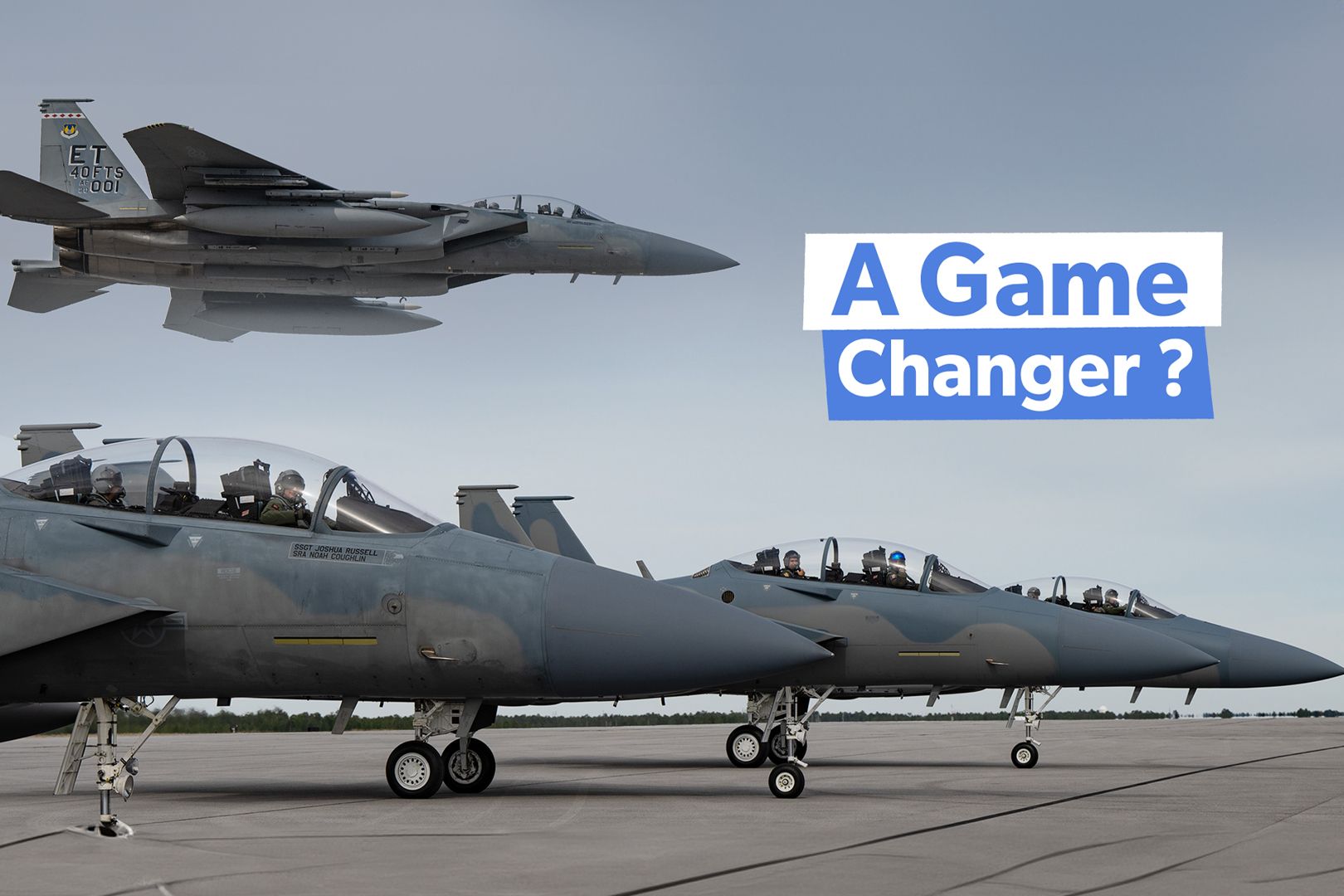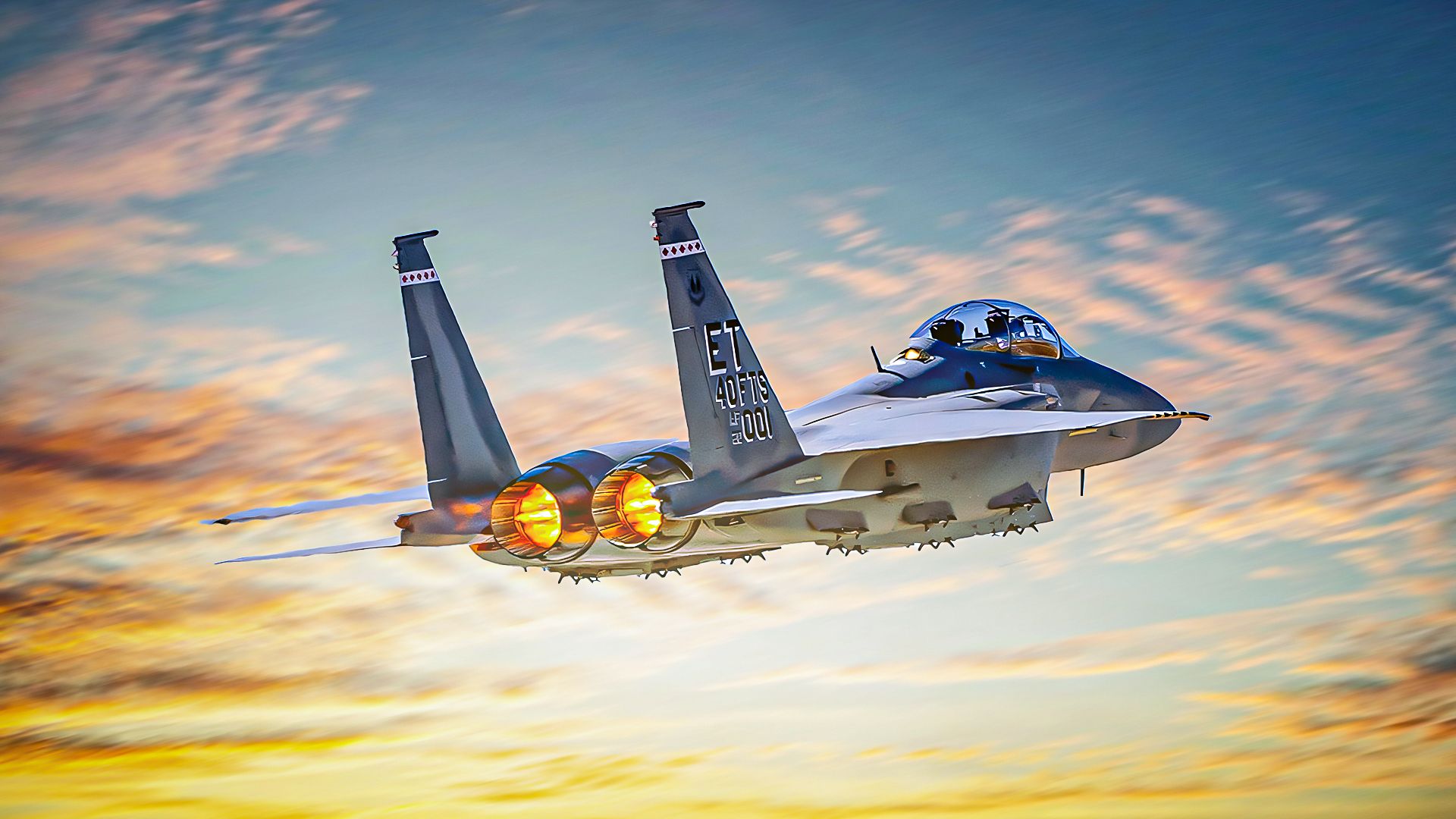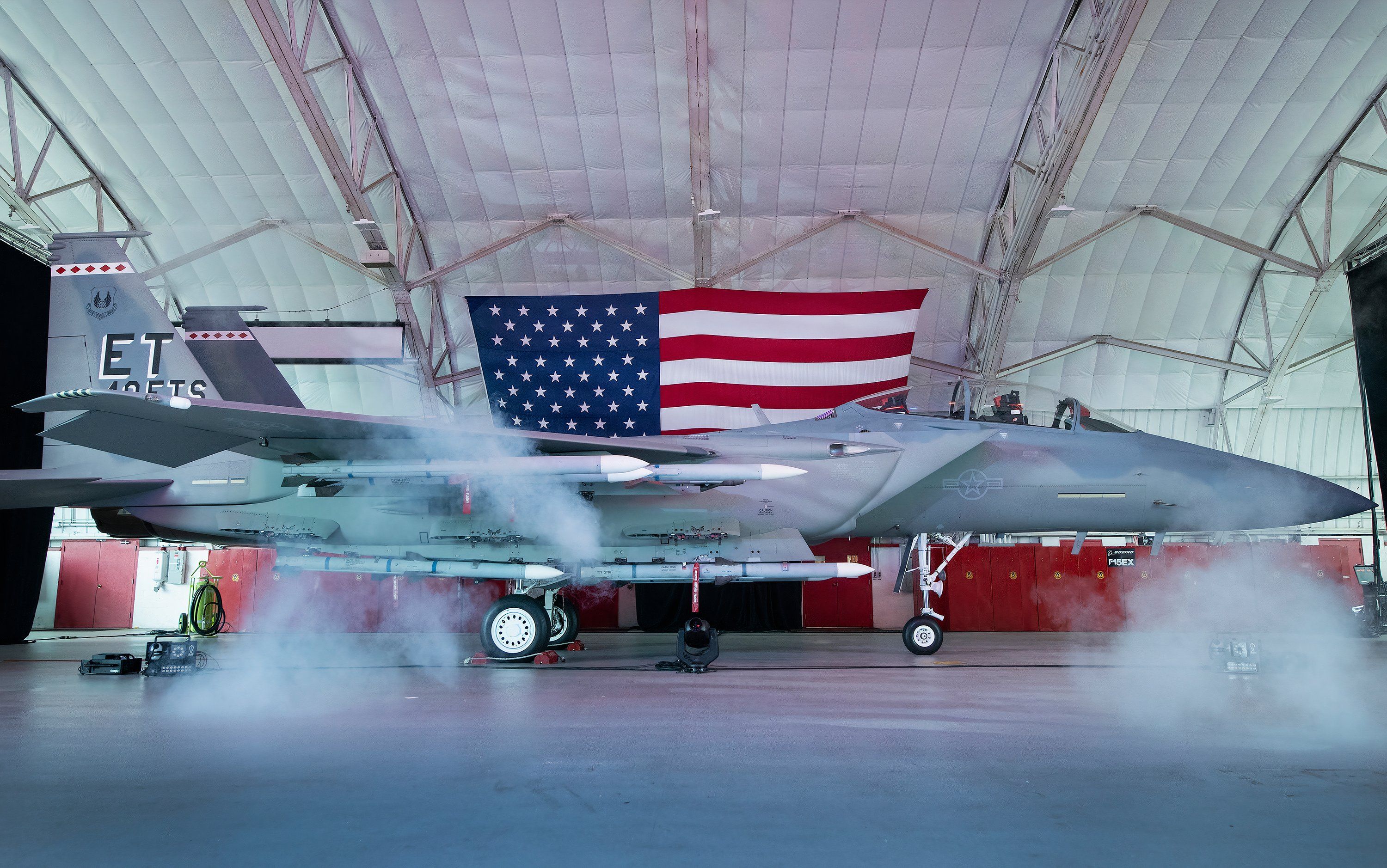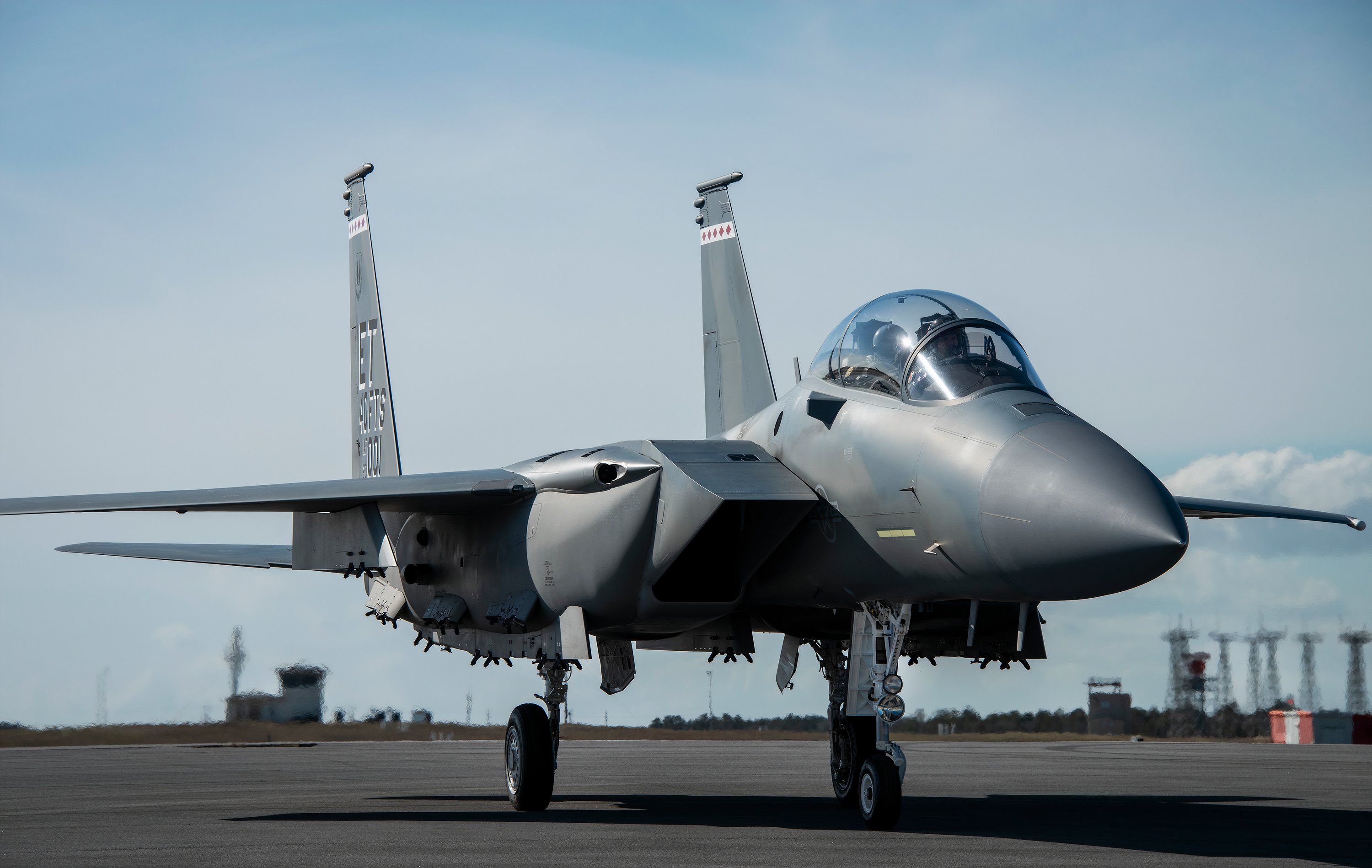Summary
- The Boeing F-15EX Eagle II, upgraded from the F-15E Strike Eagle, lacks stealth but is vital for homeland defense.
- Despite being a 4.5-generation aircraft, the F-15EX boasts improvements in electronics and weapon capabilities.
- The USAF opted for the two-seat F-15EX variant, featuring new technology and enhanced payload capacity.
Developed from the McDonnell Douglas F-15E Strike Eagle for the Royal Saudi Air Force, the Boeing F-15EX Eagle II is the storied aircraft’s latest all-weather multirole strike fighter version. In 2018, the United States Assessment and Program Evaluation study determined that due to a lack of Lockheed Martin/Boeing F-22 Raptors and delays with the Lockheed Martin F-35 Lightning II, it was wise to build an updated version of the
McDonnell Douglas F-15E Strike Eagle.
Despite lacking the stealth of the F-22 and F-35, the Boeing F-15EX Eagle II is expected to become the backbone of the United States homeland defense. Equipped with advanced electronics and preventative countermeasure systems that will help improve a pilot’s situational awareness, it is a suitable platform for deploying weapons supporting F-22s and F-35s.
The end of the Cold War and the War on terror
Following the collapse of the Soviet Union on December 25, 1991, and Boris Yeltsin’s rise to become president of the newly independent Russian state, the West, and Americans in particular, no longer felt threatened. Ultimately, this has led to a reduction in defense spending and a downsizing of the number of active military aircraft.
Photo:USAF
The situation worsened following the September 11, 2001, terrorist attacks in New York and Washington when 19 al-Qaeda terrorists hijacked four commercial airliners and flew them into the World Trade Center and the Pentagon. Following the attack, the United States quite rightly shifted its attention to counterinsurgency warfare, focusing on al-Qaeda’s leader, Osama bin Laden, and the terrorist training camps in Afghanistan.
The USAF wanted a 5th generation fighter
Now looking to replace its F-15 aircraft with a new 5th Generation Lockheed Martin/Boeing F-22 Raptor air superiority fighter, the United States Air Force (USAF) procurement goal was 381 aircraft. In 2009, it was decided that due to the F-22’s high cost and a lack of air-to-air missiles, money would be better spent developing the Lockheed Martin F-35 Lightning II for the Air Force, Navy, and Marines. In the end, only 187 F-22s were built before production ended in 2011.
What is the difference between the F-15 and the F-15EX?
Although the F-15EX and the F-15D/C may look identical from an onlooker’s point of view, on the inside, they are totally different beasts. An easy way to spot an F-15EX is that it has two seats, whereas the F-15C is a single-seat fighter. When the F-15C/D were in production, they were fitted with 1970s computer systems. Over the years, there have been considerable advances in computer technology. While the F-15EX may not be a 5th-generation fighter like the F-22 and F-35, it is not far-fetched to call it a 4.5-generation aircraft.
Photo: USAF
The USAF decided to opt for the two-seat F-15D, which was still in production at the time, to avoid the costs of starting a new production line at Boeing’s St. Louis factory.
Improvements to the F-15E include:
- A new cockpit and flight controls.
- An active electronically scanned array (AESA) radar.
- Infra-Red Search & Track (IRST) systems.
- BAE Systems’ advanced Airborne Self Protection System (EPAWSS).
- A Multiple Advanced Missile and Bomb Ejection Rack (AMBER) that enables the F-15EX to carry as many as 22 air-to-air missiles.
- A revised structure with a service life of 20,000 hours
Photo: USAF
While the F-15EX is a significant improvement to older models, it is still no match against modern surface-to-air missiles like the stealth F-22 and F-35. For this reason, it will be used primarily for homeland and air base protection and the enforcement of no-fly zones where the enemy has limited air defenses.
Is the F-15EX a two-seater?
Yes, the F-15EX has two seats in a tandem configuration. As we already mentioned, the USAF opted for the two-seat variant as the F-15D was still in production at the time of the order. By doing this, the government avoided the cost of Boeing having a brand-new production line.
How fast is the F-15EX Eagle 2?
To comprehend how fast the F-15EX II is, you need to understand how the 15 Eagle came to be in the first place. During the Cold War in 1967, the Soviet Union Air Force revealed the Mikoyan-Gurevich MiG-25 at the Domodedovo airfield near Moscow. At the time, the MiG-25 was shrouded in secrecy, with only a handful of people knowing its capabilities.

Related
F-15 vs MiG-25: Which Is Better?
Some McDonnell Douglas F-15 Eagle aircraft have been replaced with the Lockheed Martin/Boeing F-22 Raptor.
The MiG-25 was developed to counter the threat of fast, high-flying American spy planes. When engineers in the West first saw the Soviet plane, and its engine intakes the size of small cars, they were worried. The MiG-25’s large wings also indicated that it was far more maneuverable than the McDonnell F-4 Phantom II.
Four companies submitted proposals to counter the threat of the MiG-25, and the USAF selected the McDonnell Douglas design. Since its introduction into service in 1976, the F-15 has continually been upgraded to the F-15EX of today.
While the F-15EX can achieve speeds nearing Mach 2.9, multiple variables exist, such as fuel loads and weapons systems. While it can only fly at Mach 1.2 when armed with HARP missiles, the USAF intends to use the F-15EX as a platform for newly developed hypersonic cruise missiles.
What is the payload capacity of the F-15EX Eagle II?
According to Boeing, the F-15EX can carry 29,000 lbs of weapons, including oversized munitions. The F-15EX is typically fitted with twelve air-to-air missiles when performing air superiority missions. When using proposed expanded racks and Conformal fuel tanks (CFT) weapons stations, an F-15EX can carry:
- 16 advanced medium range (AGM) 120 air-to-air missiles
- Four AIM 9s
- Two AGM-88 HARM air-to-surface missiles
- 16 GBU-39 Small Diameter Bombs
- One 2,000lb bomb and two AGM-88 HARMs

Related
What Makes The F-15EX Eagle II A Game-Changer For The USAF?
The F-15EX has emerged as the Air Force’s complement to the F-35, able to perform a different suite of missions.




